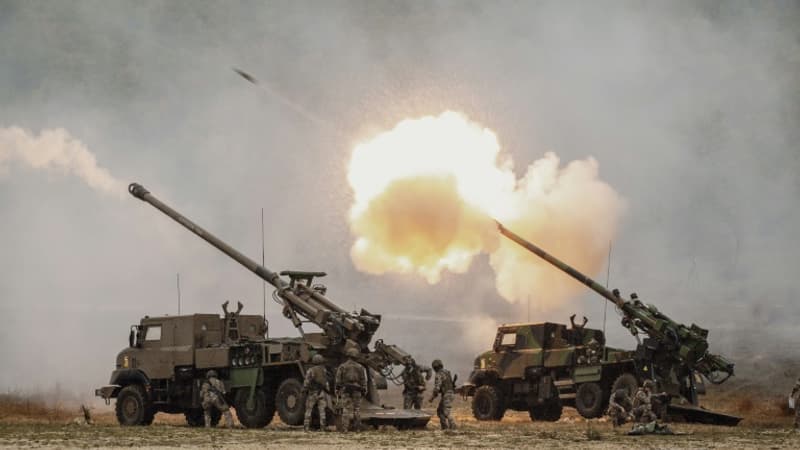Under a dense and low sky, detonations resonate on the Canjuers plateau, in the south of France. With the experience of the Ukrainian war, the Caesar cannons of the Franco-German KNDS are being reinvented to resist drones, a new threat that has arisen with this conflict. The gunners deploy to launch several 155 mm projectiles that explode over this military camp, the largest in Western Europe, which alternates clay and forest edges on the heights, before eight foreign delegations, from Europe, the Middle East and Asia, all of them potential clients.
With increasing military budgets in Europe and calls for patriotism, competition remains fierce against the South Korean K9 Thunder, which massively equips the Polish army, or the German Panzerhaubitze 2000.
Light and mobile, the Caesar is capable of neutralizing the equivalent of a football field at a distance of 40 km with a single projectile and then departing before the ammunition reaches the target. This prevents it from being detected and made a target: the destruction rate of the wheeled Caesar is around 11%, while it reaches 50% for certain, heavier and often tracked systems, assures Olivier Fort, director of artillery marketing at KNDS, citing Ukrainian statistics. It can reach its firing position in less than two and a half minutes and fire six projectiles in one minute.
“Everything to learn from Ukraine”
This architecture means that in Ukraine the Caesar travels without ammunition on board, which is prepositioned. In this way, in the event of an attack with drones or suspended munitions, the system and the crew are protected against an ultra-powerful secondary explosion.
On the Canjuers plateau, due to the incessant rains, the intelligence drone that was supposed to transmit the firing coordinates to the battery is not there. Remotely operated munitions are also missing (these armed drones that KNDS developed with French drone manufacturer Delair in record time, following the Russian invasion of Ukraine in 2022). But the large-scale demonstration is anything but theoretical: Ukraine’s main supplier of ground weapons, KNDS, is based on unique field experience, as about 120 Caesars are present in the country.
A cabin with reinforced armor, a modernized engine: since the entry into service of the first Caesar cannon in 2008, it has already proven its effectiveness in Afghanistan, Mali and Iraq and continues to evolve, assures KNDS. “There are tactics that Ukrainian artillerymen have imagined in combat and that will be adopted by the French army,” considers Olivier Fort. One of them is to combine the use of artillery to destroy trench protection networks before sending remotely operated munitions there.
Transparent and vulnerable
Now they must face the new challenge: the “transparency of the battlefield” thanks to satellites, but especially drones. “The reaction speed between detection and attack is very high. The armies of both sides have adapted to attack much faster,” adds Pascal Fabre.
The main lesson of the war in Ukraine is “the need to protect against the threat of drones and “to reconcile firepower with mobility”, declares Lieutenant Colonel Renaud Durbecq, head of the 35th parachute artillery regiment who is leading the demonstration.
Another anti-drone invention already used in Ukraine: inflatable decoys, replicas of Caesar cannons equipped with a thermal signature that are used to deflect Russian kamikaze drones and preserve real artillery pieces. “It’s really new, it allows you to integrate into the landscape,” says Renaud Durbecq.
Source: BFM TV


